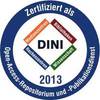German Title: Charakterisierung von Biogasanlagen in Deutschland: Quantifizierung von Methanemissionsraten und Isotopensignaturen
Preview |
PDF, English
Download (43MB) | Terms of use |
Abstract
The development of biogas as a renewable energy source in Europe and especially in Germany, the largest biogas producer in Europe, requires an appropriate strategy to quantify potential methane (CH4) losses to ensure the sustainability of renewable energy production in the biogas sector. In addition to high uncertainties in emission factors, there is little information on the temporal variation of CH4 emissions from biogas plants. To evaluate this issue, CH4 emissions were assessed across 65 biogas production sites in Germany using mobile measurements combined with a Gaussian dispersion model. The quantified CH4 emission rates ranged from 0.3 to 255 kg h−1. A significant environmental problem is the uncontrolled release of methane into the atmosphere, which is approximately 5 % (median of all analyzed biogas plants) of the methane produced. To ensure the reliability and consistency of the results, the measurement and quantification method used has been thoroughly tested and refined through controlled CH4 release experiments. These experiments helped to identify and mitigate potential sources of uncertainty. As a result, the method demonstrated n overall accuracy of 30 % in quantifying emission rates. Additionally, the isotopic source signature (δ13CH4) was determined for 18 biogas plants, revealing a wide range of values between -62.7 ‰ to -39.6 ‰, strongly influenced by the feedstock used.
Translation of abstract (German)
Die Entwicklung von Biogas als erneuerbare Energiequelle in Europa und insbesondere in Deutschland, dem größten Produzenten von Biogas in Europa, erfordert eine geeignete Strategie zur Quantifizierung potentieller Methanverluste (CH4), um die Nachhaltigkeit der erneuerbaren Energieerzeugung im Biogassektor sicherzustellen. Neben großen Unsicherheiten bei den Emissionsfaktoren gibt es nur wenige Informationen über die zeitliche Variation der CH4-Emissionen aus Biogasanlagen. Um dieses Problem zu untersuchen, wurden die CH4-Emissionen an 65 Biogasproduktionsstandorten in Deutschland unter Verwendung mobiler Messungen und eines Gauß’schen Dispersionmodells ermittelt. Die quantifizierten Emissionsraten reichen von 0.3 bis 255 kg CH4 h−1. Ein erhebliches Umweltproblem ist die unkontrollierte Freisetzung von Methan in die Atmosphäre, die etwa 5 % (Median aller analysierten Biogasanlagen) des erzeugten Methans ausmacht. Um die Zuverlässigkeit und Konsistenz der Ergebnisse zu gewährleisten, wurde die verwendete Mess- und Quantifizierungsmethode durch kontrollierte CH4-Freisetzungsexperimente gründlich getestet und weiterentwickelt. Diese Experimente trugen dazu bei, potenzielle Unsicherheitsquellen zu identifizieren und zu reduzieren. Im Ergebnis zeigte die Methode eine Gesamtgenauigkeit von 30 % bei der Quantifizierung der Emissionsraten. Darüber hinaus wurde die isotopische Quellsignatur (δ13CH4) für 18 Biogasanlagen bestimmt. Diese weisen eine breite Spanne von Werten zwischen -62.7 ‰ bis -39.6 ‰ auf, welche stark durch das verwendete Substrat beeinflusst wurden.
| Document type: | Dissertation |
|---|---|
| Supervisor: | Frank, Prof. Dr. Norbert |
| Place of Publication: | Heidelberg |
| Date of thesis defense: | 11 June 2025 |
| Date Deposited: | 23 Jun 2025 05:42 |
| Date: | 2025 |
| Faculties / Institutes: | The Faculty of Physics and Astronomy > Institute of Environmental Physics |
| DDC-classification: | 500 Natural sciences and mathematics 530 Physics |
| Controlled Keywords: | Methan, Biogas |









